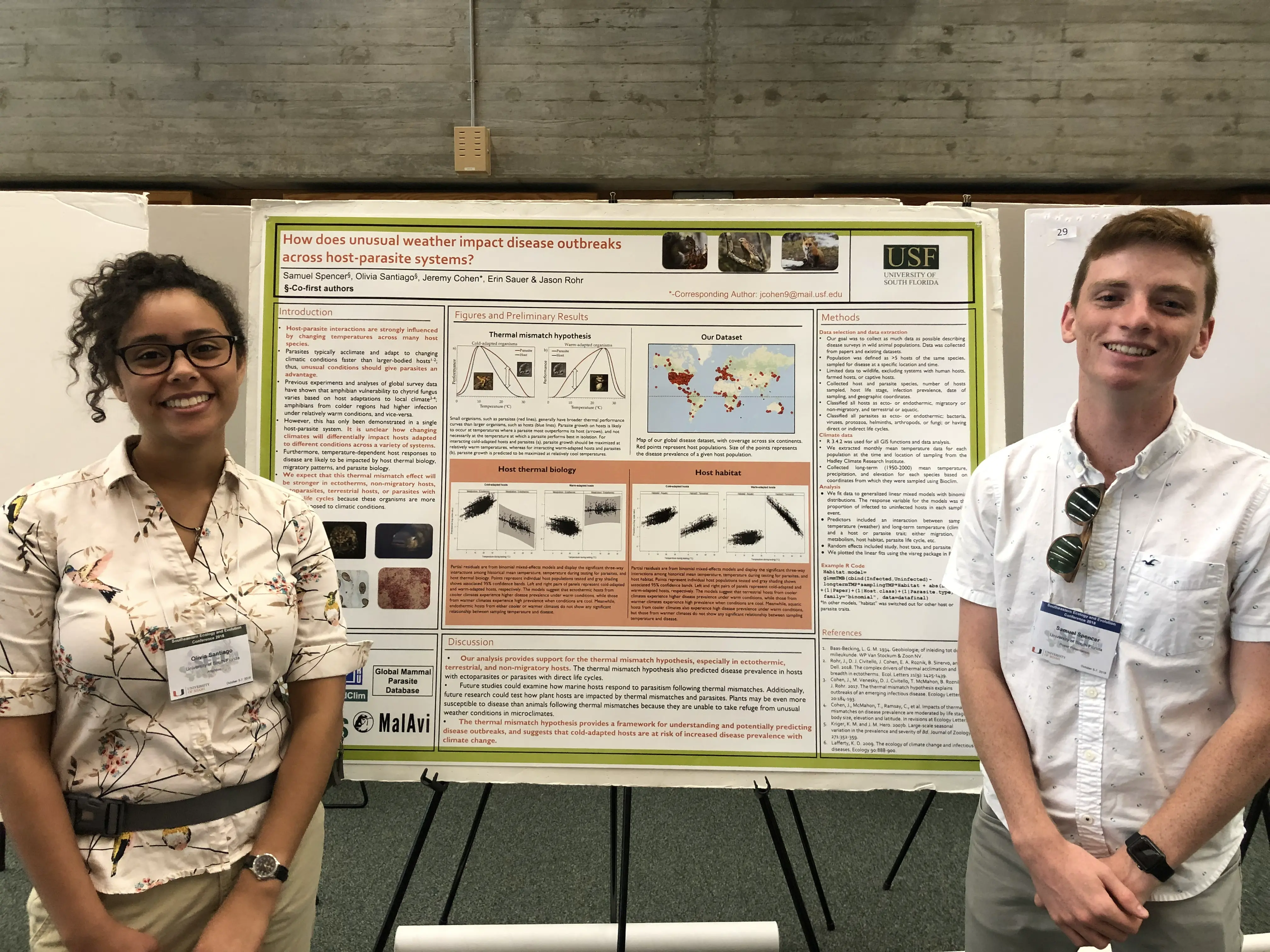Climate change alters disease risks
Climate change appears to be provoking changes in the patterns and intensity of infectious diseases. For example, when conditions are cool, amphibians from warm climates experience greater burdens of infection by chytrid fungus than hosts from cool regions. Cohen et al. undertook a global metanalysis of 383 studies to test whether this “thermal mismatch” hypothesis holds true over the gamut of host-pathogen relationships. The authors combined date and location data with a selection of host and parasite traits and weather data. In the resulting model, fungal disease risk increased sharply under cold abnormalities in warm climates, whereas bacterial disease prevalence increased sharply under warm abnormalities in cool climates. Warming is projected to benefit helminths more than other parasites, and viral infections showed less obvious relationships with climate change.
- Abstract from Jeremy M. Cohen et al., Divergent impacts of warming weather on wildlife disease risk across climates. Science 370, eabb1702(2020). DOI: 10.1126/science.abb1702
I had the opportunity to work on and collect data for this paper in Jason Rohr’s lab at the University of South Florida under the direction of Jeremy Cohen. As an undergraduate research assistant I helped with data collection, analysis, and was even able to present the paper at a University of Miami conference with my peer, Olivia Santiago. The paper was published in Science on November 20, 2020.

Since the presentation and publication, the research has received over 100 citations from other academic papers and is in the top 5% of all research outputs scored by Altmetric.



You can read the full paper here, in Science.
